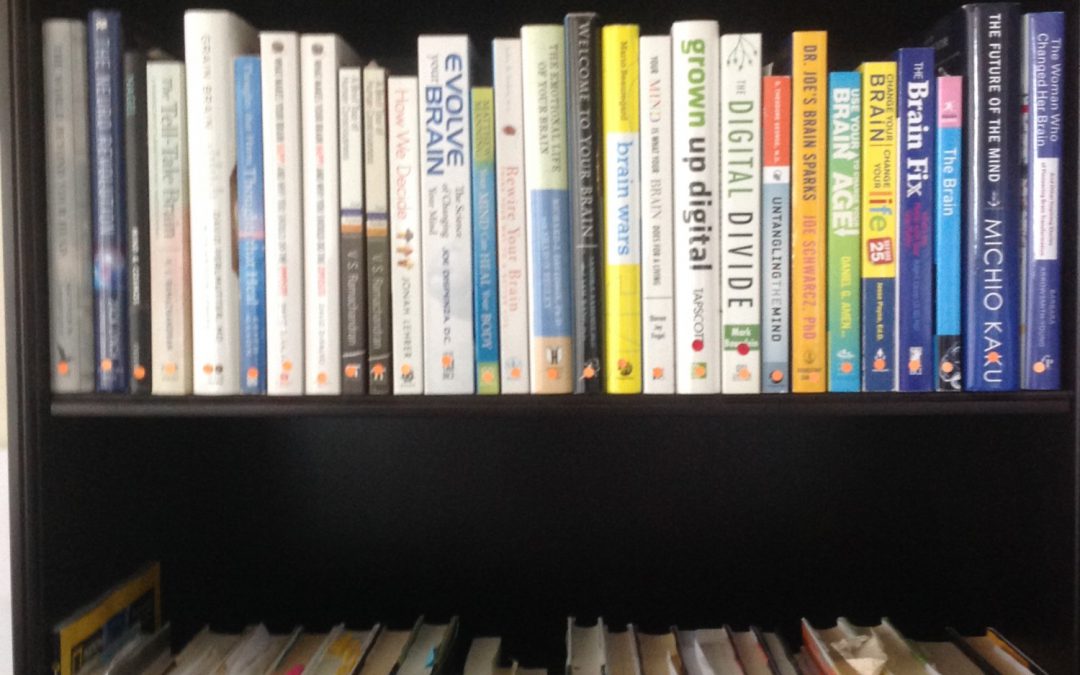
Organization aids peace of mind, creativity, and attention as well as time effectiveness. Disorganization, on the other hand, causes stress, fractured thinking and wasted time. It could even contribute to obesity.
For example, a Psychology Today article posted on May 17, 2017 mentioned a study showing that people will eat more cookies and snacks if working in a messy and disorganized kitchen. A special edition of Mindfulness, April, 2017, reported that according to the recent study published in Environment and Behavior, we are likely to overeat up to 34% more when our kitchens are in a mess – such as old newspapers, unopened mail on the counter and so on.
Mehmet Oz and Mike Roizen, authors of YOU: On a Diet, claim that visual clutter slows down the brain. That’s why clusters of road signs double the chances of missing the one you’re looking for. It also explains why website designers aim for simplicity.
As we read more about the workings of our brain, we learn even more about the importance of getting organized. For example, according to neuroscientist Torkel Klingberg, author of The overflowing brain, the more items on your desk, the greater the demand on your attention. And mental clutter is a suspect in the cause of age-related memory losses. Clearing clutter from your desk, office and home and leaving more wide open spaces also helps to clear your mind so it will be more productive.
To stay organized you must develop systems unique to your situation, whether it is handling paperwork, managing email, conducting meetings, using a follow-up file or scheduling in a planner.
Peter Bregman, in his book 18 Minutes, describes a study showing that deciding in advance when you will do something increases your commitment to do it. That’s one of the reasons I suggest to people that they block off times in their planner to actually do the priority tasks. This could include blocks of time to organize specific areas of your home and office.
Here are a few organizing suggestions that I have published at one time or another in my bi-monthly time management newsletter.
Re-purpose storage space
When you sort through your belongings and donate or scrap the sweaters, blouses, scarves and other clothing items you never use, re-purpose the drawer for those non-clothing items that are causing your closets and other storage areas to overflow. You are re-purposing when you remove bottom shelves of linen closets to store your golf clubs or use a kitchen drawer to house your toolkit. Don’t feel that you have to use all storage areas for the purpose they were originally intended. I use a spare bedroom as an office, and the closet organizers such as hanging compartments for shoes and larger ones for sweaters now house my various office supplies.
Not so junky junk drawer
I maintain that everyone needs a junk drawer for miscellaneous one-of-a-kind items. The secret is not to let it expand into two or more junk drawers. When items that you just can’t part with become too plentiful to find quickly, add dividers to the drawer to separate items that have some common association – such as those used in the same room, (kitchen, garden, etc.) or for common use (cooking, repairing, washing, etc.)
Act at the time of recall
When you recall that you need to mail letters in the morning or deposit clothes for dry cleaning or return a book to a friend, act now, not in the morning. Place those items near the front door or on the front car seat – where they won’t be missed. Marking them on a “To Do” list might not allow enough time if you’re rushing in the morning. And you could even misplace or forget to look at your “To Do” list.
Organizing tip for procrastinators
Not ready to part with some of the items cluttering up your home or office? In addition to your “Toss”, “Keep”, and “Donate” boxes, have a fourth one labelled “In limbo” for those items that you can’t decide whether to toss, donate or keep. Six months or a year later, tackle this box as well. If you haven’t needed, looked for, missed or even thought about any of the items in the meantime, it will be a lot easier to part with them.
Brighten up those storage areas
Rather than storing those extra paintings and framed photographs that usually get shoved under the bed, and that artificial plant that you received from Aunt Sally, use them to embellish closets, the laundry room and other out-of-sight areas that tend to attract unused stuff. You might hesitate before blocking wall-hangings and other decorative pieces. It also gives you the added advantage of brightening up those otherwise cluttered hideaway places that you have to visit frequently. It might even give your mood a boost.
If you need a further reason to invest a little time in getting organized, heed the information published in the April 6, 2013 issue of The Globe & Mail in an article by Leah Etchler. A U.S Study found that employees lose 76 hours per year as a result of disorganization. That’s time that could be put to use – either in your business or your personal life.


Recent Comments